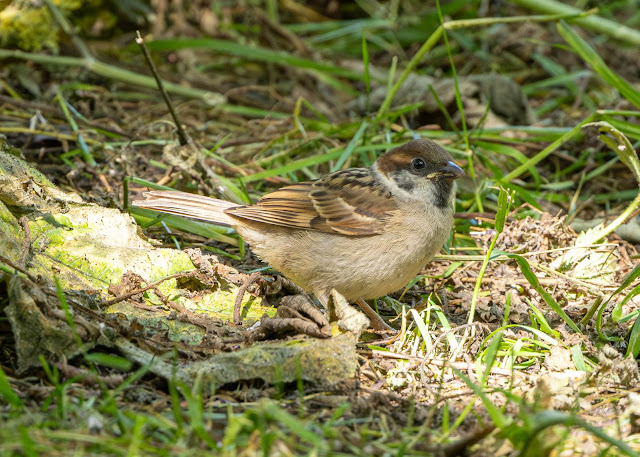A close call with the curse of Kent, a cracking day out at Bempton Cliffs RSPB and a Monty’s at last!
 |
| Northern Gannet |
I’ve been thinking about visiting RSPB Bempton Cliffs in Yorkshire, mainly to photograph sea birds, for a couple of weeks and finally made up my mind to go this Thursday. My plans, however, were thrown into disarray late on Tuesday evening when a Mega rare Zitting Cisticola was found in deepest darkest Kent. As I needed this warbler for my UK list, I decided to postpone my visit to Bempton the next morning and twitch this bird in Kent as long as it stayed overnight.
An early start was needed so I had an early night but sleep eluded me as I worried about the trip down to Kent. Two troublesome thoughts went round and around in my overactive brain keeping me awake. Firstly, the 4 hour drive down to Kent is probably my least favourite with long delays almost guaranteed when parked on the motorway formally known as the M25. Secondly, and much more worryingly was the curse of Kent.
In 1760 lord Twitington Smallpiece , whose name is the origin of the verb to twitch, was galloping across his estate on his faithful horse in a frantic attempt to twitch a Wood Pigeon. Unfortunately in his great haste he ran over and trampled to death a local witch. With her dying breath she cursed all twitchers who travel to Kent. The curse continues to this very day meaning that you will almost certainly dip the object of your Kent twitch in the most upsetting of circumstances. On my last visit to Kent a month or so back I missed a much desired Bonelli's Warbler by a matter of minutes. As I gazed forlornly at the empty bush where it had spent the past couple of hours singing I’m sure I heard an evil cackle!
I was saved from the curse by the bird flying off never to be seen again shortly after I left home on Wednesday morning so I reverted to my original plan and made my way towards Bempton.
Bempton Cliffs, on the spectacular Yorkshire coast, is home to one of the UK's top wildlife spectacles. Around half a million seabirds gather here between March and August to raise a family on the towering chalk cliffs that overlook the North Sea. I have many fond memories of successful twitches to Bempton including Green Warbler, Pale Legged Warbler, Black-browed Albatross and Turkestan Shrike. There are a number of excellent viewing platforms atop the cliffs giving fantastic views of the seabird colonies. The largest UK mainline colony of Gannets, comprising some two thousand pairs, return every year to nest.
These are truly impressive seabirds with a wingspan of up to two meters and the viewing platforms provide excellent views of them flying, diving for fish, and interacting at their nesting sites. They are well known for their impressive dives into the sea at up to 100 km/hr to catch fish. They have a number of adaptions for hunting underwater. They are equipped with large webbed feet making them as agile and fast under water as they are above. They have air sacs in the face and chest under the skin, which act like bubble wrap cushioning the impact with the water. Their nostrils are located inside the mouth rather than externally on the bill and the position of their eyes gives them binocular vision allowing them to judge distances accurately.
 |
| Check out those feet! |
In common with other seabirds, they have a long adolescence only reaching adulthood in their 5th year. First-year birds are completely black, and subsequent subadult plumages show increasing amounts of white. Both adults and non-breeding subadults return to the cliffs each year producing a wonderful avian spectacle.
The main aim of my visit was to photograph the Gannets in flight using my new 100-500mm lens which is much better suited to this task than my 500mm prime. The task was also made much easier by the excellent tracking capabilities of the R5 autofocus. After a bit of experimentation I found that views of the birds flying overhead rather than from below produced the most pleasing results. It is a popular misconception that bright sunlight produces the best bird photos. Direct sunlight makes it very hard to get the correct exposure on predominantly white birds leading to burn out and also often results in unseemly shadows!
I also spent a little while watching the Trees Sparrows around the visitors centre. Sadly, these adorable little birds are in big trouble in the UK. The population has suffered a severe decline, thought to be 93% between 1970 and 2008. But recent breeding bird survey data is encouraging, suggesting that numbers may have started to increase, although from a very low point.
 |
| Tree Sparrow |
A great day out which will remain a fixture of my birding calendar.
 |
| Razor Bill |
Footnote – my blogs are posted with sometimes rather imaginative spelling and grammar due to my extreme dyslexia!




Comments
Post a Comment